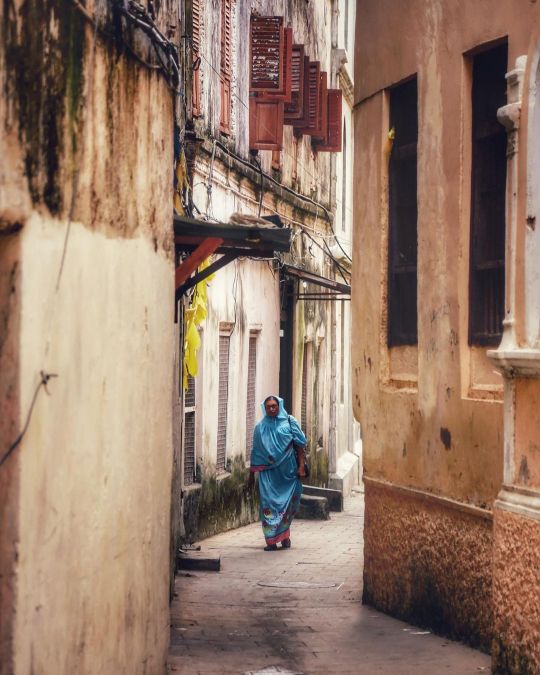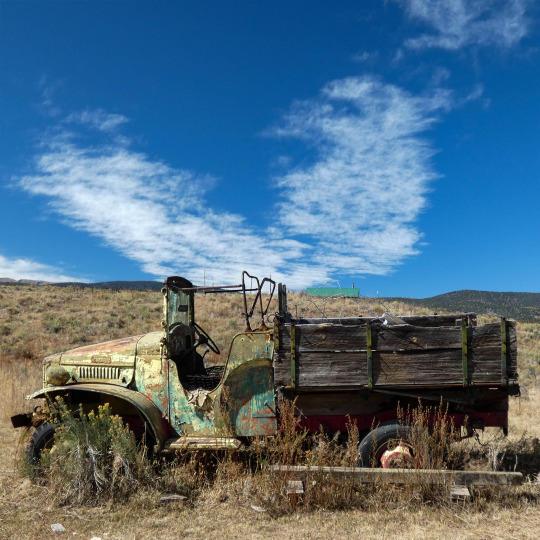#Traveladdict
Text

Shevchenkivsʹkyy Hay, Ukraine
#landscape#nature#original photographers#view#photography#travel#photographers on tumblr#kids toys#toys#museum#ukraine#lviv#wooden architecture#wooden church#tumblr photography#український tumblr#travelphoto#traveladdict#travelphotography#original photography on tumblr#culture
31 notes
·
View notes
Video
Switzerland in all Seasons ❄️🌸☀️🍂
#switzerland#swissaround#travel#tiktoktravel#swiss#landscape#Travel#Wanderlust#Adventure#Explore#TravelPhotography#InstaTravel#TravelGram#TravelInspiration#TravelGoals#BucketList#TravelAddict#TravelLife#TravelBlogger#TravelDiaries#RoamThePlanet#TravelAwesome#TravelCouples#TravelCommunity#TravelDifferently#TravelEats#TravelTips#SoloTravel#TravelWithMe#TravelDreams
600 notes
·
View notes
Photo

Oulanka National Park, Finland Photograph by @mpxmark
(via Pinterest)
#travel#travelgram#traveling#travelphotography#travelling#travelblogger#traveler#traveller#travelingram#travelblog#travels#traveltheworld#traveladdict#travelphoto#travellife#traveldiaries#travelpics#earthroulette
112 notes
·
View notes
Text

Love This Place
#travelling#travel#travelphotography#travelblogger#nature#photography#traveling#traveller#traveltheworld#photooftheday#trip#vacation#traveler#holiday#adventure#love#tourism#explore#traveladdict#picoftheday#naturephotography#travelblog
40 notes
·
View notes
Text

Torii, Hakusan Shrine, Tokyo.
#tokyo#japan#japan blogs#street view#street photography#urban aesthetic#japon#traveladdict#life in japan#street vibes#tumblr japan#nippon#cityphotography
587 notes
·
View notes
Photo

-STONE TOWN- capitale de Zanzibar, est connue pour posséder le plus vieux quartiers de l’île. Stone Town est située sur la côte Ouest de l’île. Si vous avez envie d’un bouillon de culture et d’histoire sur les rives de l’Océan Indien, il n’y a pas meilleur endroit qu’ici. Non loin des plages paradisiaques de Zanzibar, la vieille ville vous offre un tissu urbain et culturel fascinant marqué par une riche histoire multiculturelle. Stone Town patrimoine mondial de l’UNESCO en 2000 . #tanzania #tanzania🇹🇿 #tanzanie #stonetownzanzibar #stonetown #zanzibar #zanzibarisland #zanzibarbeach #travelphotography #travel #travelgram #travelblogger #traveltheworld #traveladdict #voyage #voyageursdumonde #naturerey #city #cityscapes #nationalgeographic #capital #ville #africa #afrika #isla #island #ocean #oceanlife #beach #goodvibes (à Stone Town, Zanzibar) https://www.instagram.com/p/CpUpwm6M5Te/?igshid=NGJjMDIxMWI=
#tanzania#tanzania🇹🇿#tanzanie#stonetownzanzibar#stonetown#zanzibar#zanzibarisland#zanzibarbeach#travelphotography#travel#travelgram#travelblogger#traveltheworld#traveladdict#voyage#voyageursdumonde#naturerey#city#cityscapes#nationalgeographic#capital#ville#africa#afrika#isla#island#ocean#oceanlife#beach#goodvibes
90 notes
·
View notes
Text


Elizabethtown’s heyday was short-lived and intense. The post office opened early in the summer of 1868. There were 3,000 men working gold claims within one year. Prospectors built cabins on top of, or adjacent to, their mines. There were a couple of hotels, five stores, seven saloons, a brewery, three dance halls, two churches, a school, a flour depot, and a drugstore by 1869. The saloons boasted dance floors, gaming tables, and bars that were 100-200 feet long.
#New Mexico#NewMexico#travel#roadtrip#daytrip#weekendgetaway#ghosttown#history#historygeek#earthpix#travelblogger#traveladdict#wanderlust#travel_life#travelfun#lovefortravel#traveladdiction#traveldiary#travelphotos#offthebeatentrack
16 notes
·
View notes
Text
#glass igloos#snowy landscape#cozy aesthetic#warm and cozy#mountains#landscapes#travelblog#reisen#viajar#wonderful places#amazing videos#traveladdict#luxury lifestyle#finland#christmas mood#christmas vibes
254 notes
·
View notes
Text

Coffee time☕️
#coffee#coffetime#coffee with a view#travel#travel photography#traveladdict#nature#landscape#original phography#tumblrphoto#cup of coffee
28 notes
·
View notes
Text
Some waterfalls to find in Arkansas.
#nature#naturelovers#nature_perfection#naturegram#outdoors#travel#travelgram#travelblogger#travelling#arkansas#arkansasoutdoors#waterfalls#chasingwaterfalls#traveladdict#waterfallsofarkansas#natureblogger#fyp#fypシ#video#my photography#photo#my art#my photos#photographers on tumblr#nature photography#photography
13 notes
·
View notes
Photo

The Masai "jumping dance", which the correct name is adumu, is one of several rites that make up the Eunoto, the event in which the morani, or younger warriors, advance to manhood. #levame #travel #traveladdict #wanderlust #savana #savanalife #hakunamatata #ojipedos7 #masai #arusha #tanzania (em Arusha, Tanzania) https://www.instagram.com/p/CovUkM1M2jFW6j-Q-shZGipx5hFWdgWVz-I0E80/?igshid=NGJjMDIxMWI=
#levame#travel#traveladdict#wanderlust#savana#savanalife#hakunamatata#ojipedos7#masai#arusha#tanzania
60 notes
·
View notes
Text

Transcarpathia, Ukraine
#landscape#nature#original photographers#view#natureview#photography#travel#photographers on tumblr#mountains#beautiful nature#naturephotography#travelphoto#traveladdict#scenary#tumblrphoto#український tumblr#ukraine#tumblr photography#original photography on tumblr#mountainview#sunset vibes#sunset colors#sunsetview#clouds#colors
24 notes
·
View notes
Photo

Travel tips for Venice Italy including recommendations for places to eat, getting around Venice, and photo tips. Read about my honeymoon trip to this amazing city with tips for a romantic and less stressful trip! Pictures of the Grand Canal, gondolas and St Mark's Square included. things to do in Venice
#venice#italy#europe#europetravel#travelguide#Travel#Wanderlust#Adventure#Explore#TravelPhotography#InstaTravel#TravelGram#TravelInspiration#TravelGoals#BucketList#TravelAddict#TravelLife#TravelBlogger#TravelDiaries#RoamThePlanet#TravelAwesome#TravelCouples#TravelCommunity#TravelDifferently#TravelEats#TravelTips#SoloTravel#TravelWithMe#TravelDreams#NomadLife
225 notes
·
View notes
Text

Gulmohar tree ❤️
26 notes
·
View notes
Link
#kilimanjaro#preparation#climbers#adventure#mount#safari#traveladdict#travelblogger#govacation#mountians
165 notes
·
View notes
Text

Inca Trail all information!
Title: Hiking the Inca Trail in Peru: A Journey Through Time and Nature
Peru's Inca Trail is more than just a trek; it's a journey through history and nature that captures the essence of the ancient Inca civilization. This legendary trail is a bucket-list experience for adventurers and history enthusiasts alike. In this blog post, we'll delve into the history, offer essential tips, explore regulations, discuss the best seasons to visit, and prepare you for the altitudes you'll encounter on this epic journey.
The Historical Marvel of the Inca Trail: The Inca Trail is steeped in history, serving as a testament to the architectural and engineering prowess of the Inca Empire. This 26-mile (42-kilometer) trail once connected Cusco, the imperial capital, to the sacred city of Machu Picchu. Along the way, hikers encounter an array of archaeological wonders, including ancient settlements, temples, terraces, and fortresses that whisper tales of a bygone era.
Essential Tips for Your Inca Trail Adventure:
Plan Ahead: Due to conservation efforts and the preservation of this heritage site, you must book your trek with a licensed tour company. Permits are limited, so securing your spot well in advance is crucial.
Physical Preparation: While the Inca Trail is manageable for most, it's a challenging endeavor. Preparing with regular walks or hikes will enhance your experience.
Acclimatization: Cusco's high altitude can take a toll. Spend a few days in the city before your trek to acclimatize and avoid altitude sickness.
Regulations to Preserve the Inca Trail: The Peruvian government has implemented regulations to protect the trail and its environment. These include group size limits, designated campgrounds, and strict waste management practices. These measures aim to minimize the impact on this historical and ecological wonder.
Choosing the Right Season: The best time to embark on this adventure is during the dry season, which spans from May to September. The weather is more predictable, and the trail is at its most picturesque. However, it's also the busiest time, so booking your trek early is essential. If you prefer fewer crowds, consider visiting during the wet season (October to April), but be prepared for rain and muddy trails.
Conquering the Altitudes: The Inca Trail involves significant altitudes, with Dead Woman's Pass reaching around 13,828 feet (4,215 meters). Acclimatization in Cusco is key. Drinking plenty of water and taking it slow are essential strategies to combat altitude sickness.
Packing Like a Pro: Your packing list should include layers for varying temperatures, waterproof gear, sturdy hiking boots, a quality daypack, a refillable water bottle, and essentials such as a hat, sunglasses, and sunscreen.
Respect for Nature and Culture: As you hike the Inca Trail, remember to stay on designated paths, respect local customs, and follow the "leave no trace" principle. The Inca Trail is a UNESCO World Heritage site, and preserving its sanctity is everyone's responsibility.
The Inca Trail offers not just an adventure but a remarkable journey into the heart of the Inca Empire. Whether you're an intrepid explorer or a history buff, this ancient trail promises an unforgettable and awe-inspiring experience. As you embark on this trek, be prepared, responsible, and ready to be transported through time as you explore this incredible route.
FAQS
Inca Trail Frequently Asked Questions (FAQ)
What is the Inca Trail, and why is it famous?
The Inca Trail is a historic hiking route in Peru that leads to the magnificent city of Machu Picchu. It's famous for its stunning scenery, ancient archaeological sites, and the chance to walk in the footsteps of the Inca civilization.
Do I need a permit to hike the Inca Trail?
Yes, you must obtain a permit to trek the Inca Trail. These permits are limited to help protect the environment and cultural heritage. It's essential to book your trek with a licensed tour operator well in advance, as permits can sell out quickly.
How long is the Inca Trail, and how many days does the hike take?
The classic Inca Trail is approximately 26 miles (42 kilometers) long. Most treks span 4 days and 3 nights, covering the distance gradually to help with altitude acclimatization.
When is the best time to hike the Inca Trail?
The dry season, from May to September, is the best time for trekking. However, it's also the busiest period. The wet season (October to April) has fewer crowds but more unpredictable weather.
What's the altitude of the Inca Trail, and how can I prepare for it?
The highest point on the Inca Trail, Dead Woman's Pass, stands at approximately 13,828 feet (4,215 meters). To prepare, spend a few days acclimatizing in Cusco and stay hydrated. Take it slow and enjoy the journey.
What should I pack for the Inca Trail?
Essentials include sturdy hiking boots, waterproof clothing, layers for varying temperatures, a quality daypack, a refillable water bottle, and personal items such as a hat, sunglasses, and sunscreen.
Are there any regulations for preserving the Inca Trail?
Yes, there are regulations in place to protect this historical and ecological wonder. They include group size limits, designated campgrounds, and strict waste management practices. Travelers must follow these rules to minimize their impact on the environment and heritage sites.
What should I know about Machu Picchu itself?
Access to Machu Picchu is limited, and visitors are encouraged to explore responsibly. Please stick to designated paths, respect local customs, and ensure you follow the "leave no trace" principle while visiting this UNESCO World Heritage site.
Is a guide required for the Inca Trail?
Yes, trekking the Inca Trail requires a licensed guide, which is typically provided by tour operators. The guide not only ensures your safety but also enhances your experience by sharing insights into the history and culture of the trail.
Can I hike the Inca Trail on my own?
No, independent hiking on the Inca Trail is not allowed. Travelers must be accompanied by a licensed guide from a registered tour operator. This is to protect the environment and cultural heritage.
Is there a limit to the number of hikers on the Inca Trail each day?
Yes, the number of trekkers is strictly regulated to protect the trail and its surroundings. Only 500 permits are issued per day, and this includes guides and porters. Therefore, it's essential to book your trek well in advance.
What is the best way to book a trek on the Inca Trail?
Booking through a reputable tour operator is the best way to secure your permit, guide, and all the logistics for your trek. These operators handle the permit application process and provide a comprehensive experience for trekkers.
What's the level of difficulty on the Inca Trail?
The Inca Trail is considered a moderate to challenging trek. It involves steep ascents and descents, as well as varying terrain. While it's suitable for most hikers, it's important to be physically prepared and mentally ready for the journey.
Are there any age restrictions for the Inca Trail?
There are no strict age restrictions. However, hikers should be in good physical health and prepared for the altitude and varying trail conditions. Children, especially younger ones, may find it challenging.
Can I customize my Inca Trail experience?
Yes, some tour operators offer variations of the Inca Trail that can cater to different interests and fitness levels. If you have specific preferences, discuss them with your tour operator when booking.
These FAQs should provide you with valuable information and help you prepare for your Inca Trail adventure. Remember, it's not just a hike; it's a journey into history and nature that promises an unforgettable experience.
#Travel#Adventure#Wanderlust#Explore#Vacation#Nature#TravelPhotography#BeautifulDestinations#BucketList#TravelGram#TravelGoals#InstaTravel#Wanderer#Traveling#AdventureTime#ExploreTheWorld#TravelAddict#RoamThePlanet#PassportReady#TravelLife#TravelBlog#TravelInspiration#TravelersNotebook#TravelCouples#SoloTravel#incatrail#inkatrail#traveltoperu#travelperu#traveltips
7 notes
·
View notes